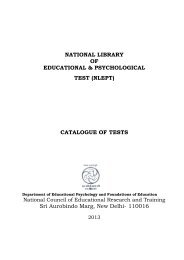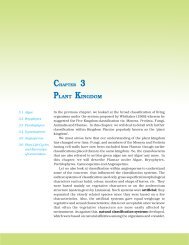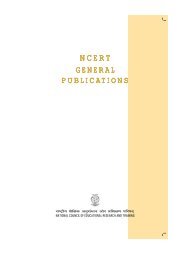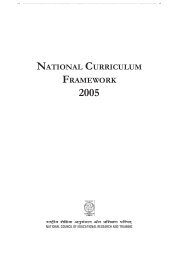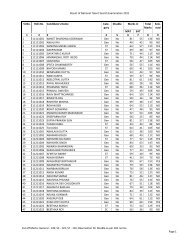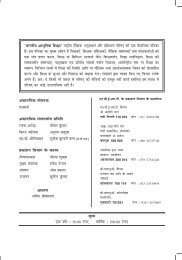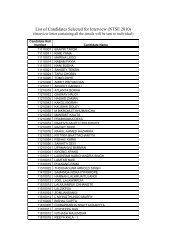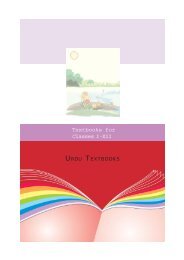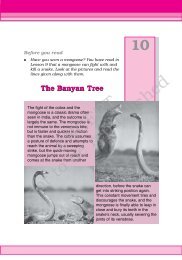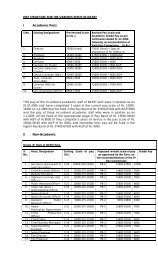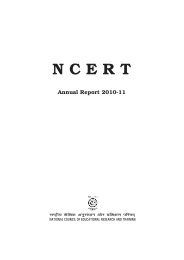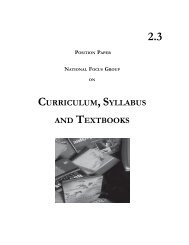Chap-03 discovering tut - National Council Of Educational Research ...
Chap-03 discovering tut - National Council Of Educational Research ...
Chap-03 discovering tut - National Council Of Educational Research ...
You also want an ePaper? Increase the reach of your titles
YUMPU automatically turns print PDFs into web optimized ePapers that Google loves.
DISCOVERING TUT: THE SAGA CONTINUES 25<br />
he set the mummy outside in blazing sunshine that heated it to<br />
149 degrees Fahrenheit. Nothing budged. He reported with<br />
scientific detachment that “the consolidated material had to be<br />
chiselled away from beneath the limbs and trunk before it was<br />
possible to raise the king’s remains.”<br />
In his defence, Carter really had little choice. If he hadn’t cut<br />
the mummy free, thieves most certainly would have<br />
circumvented the guards and ripped it apart to remove the gold.<br />
In Tut’s time the royals were fabulously wealthy, and they<br />
thought — or hoped — they could take their riches with them.<br />
For his journey to the great beyond, King Tut was lavished with<br />
glittering goods: precious collars, inlaid necklaces and bracelets,<br />
rings, amulets, a ceremonial apron, sandals, sheaths for his fingers<br />
and toes, and the now iconic inner coffin and mask — all of pure<br />
gold. To separate Tut from his adornments, Carter’s men removed<br />
the mummy’s head and severed nearly every major joint. Once<br />
they had finished, they reassembled the remains on a layer of<br />
sand in a wooden box with padding that concealed the damage,<br />
the bed where Tut now rests.<br />
Archaeology has changed substantially in the intervening<br />
decades, focusing less on treasure and more on the fascinating<br />
details of life and intriguing mysteries of death. It also uses more<br />
sophisticated tools, including medical technology. In 1968, more<br />
than 40 years after Carter’s discovery, an anatomy professor<br />
X-rayed the mummy and revealed a startling fact: beneath the resin<br />
that cakes his chest, his breast-bone and front ribs are missing.<br />
Today diagnostic imaging can be done with computed<br />
tomography, or CT, by which hundreds of X-rays in cross section<br />
are put together like slices of bread to create a three-dimensional<br />
virtual body. What more would a CT scan reveal of Tut than the<br />
X-ray? And could it answer two of the biggest questions still<br />
lingering about him — how did he die, and how old was he at the<br />
time of his death?<br />
King Tut’s demise was a big event, even by royal standards.<br />
He was the last of his family’s line, and his funeral was the death<br />
rattle of a dynasty. But the particulars of his passing away and its<br />
aftermath are unclear.<br />
Amenhotep III — Tut’s father or grandfather — was a powerful<br />
pharaoh who ruled for almost four decades at the height of the<br />
eighteenth dynasty’s golden age. His son Amenhotep IV succeeded<br />
him and initiated one of the strangest periods in the history of



